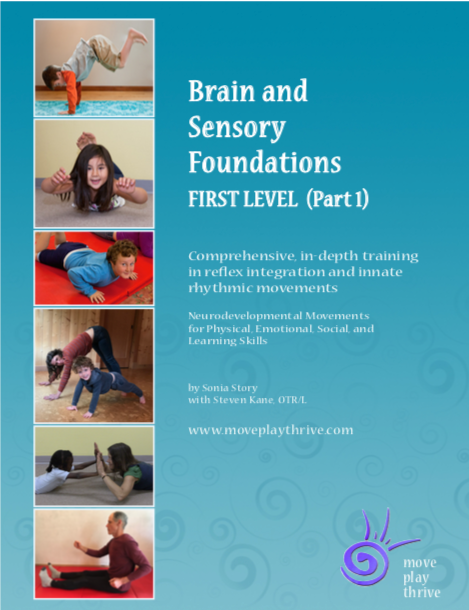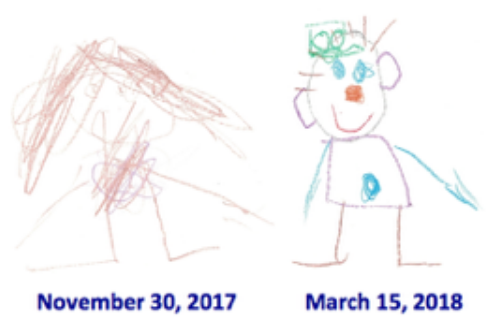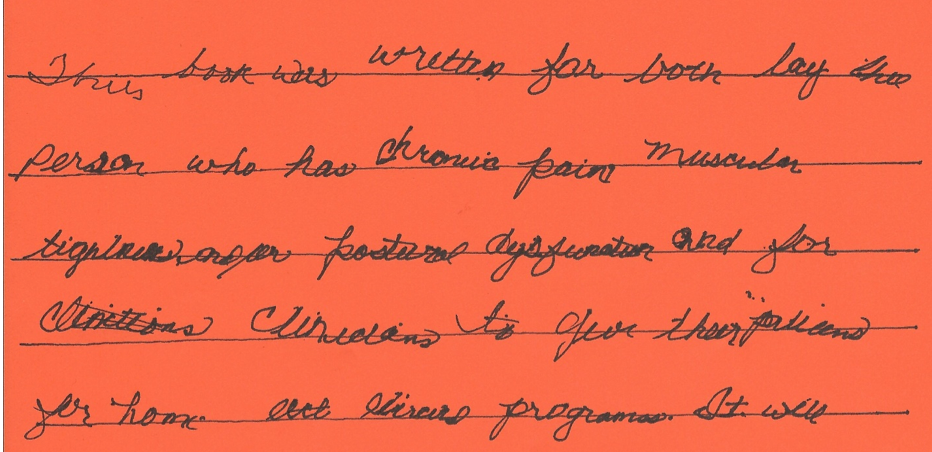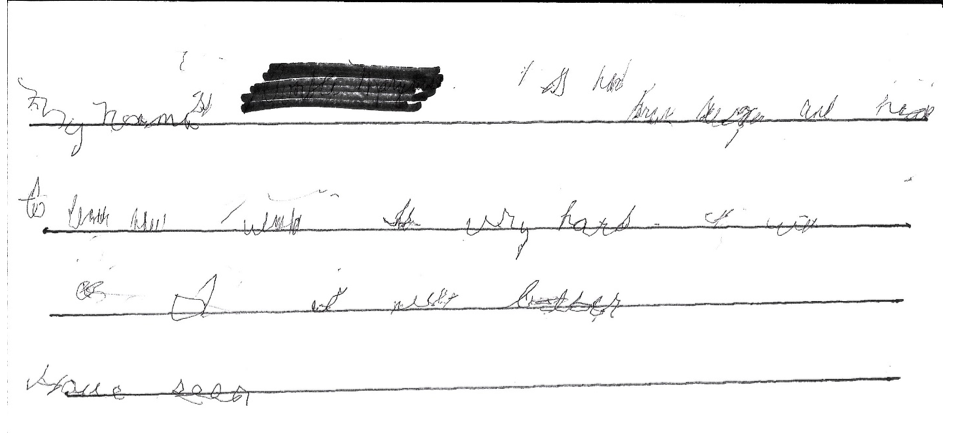

 Drawing submitted by Kara Walther, OT; See Case Study
Drawing submitted by Kara Walther, OT; See Case Study
Brain and Sensory Foundations, Port Townsend, Washington
Do you worry that you could be missing something in your approach to therapy?
Do you wish you could have a bigger impact in a shorter amount of time?
Do you want a step-by-step system that is tested, proven, and supported by evidence?
The Brain and Sensory Foundations course gives easy-to-use tools to build sensory processing, balance, coordination, speech, learning, and social-emotional skills
REAL-LIFE Results!
Watch these videos from practitioners:
Lynda Steed, OT:
“I am helping kids experience success like I’ve never seen"
Melody Edwards, PT:
“. . . the most valuable thing I have ever learned in my entire career.”
Make a HUGE impact.
Learn tools for overcoming sensory issues.
Be inspired by profound and measurable results.
Extensive tools to integrate primitive reflexes, in-depth.
Facilitate effective movement programs for all ages.
Gain Confidence!
Watch children & clients transform!
Have Fun!
Course Tuition: $595 per individual
Register Here
Amazing Transformation:
Drawings done by students of
Nina Gallwey, of the Siskiyou School
Transformation for Adults Too:
"After" Sample 2, below
February 16, 2016, Handwriting is greatly improved after one week using movements from the Brain and Sensory Foundations course. Submitted by Virginia Holcomb, OTR/L, CLT

"Before" Sample 1, below
February 9, 2016, Handwriting sample from woman, 62 years old, who contracted bacterial menegitis and had subsequent brain surgery to remove a large mass in the left hemisphere.

You will receive:
• Research on the connection between unintegrated reflexes and learning challenges and ADHD symptoms
• Outstanding sensory integration tools
• Insight on why infant movements build learning, sensory processing, social-emotional skills, speech, and balance
• Movements and games for integrating 11 key infant reflexes
• Innate Infant rhythmic movements for brain maturity
• Movements for reducing stress, trauma and anxiety
• Simple but powerful movement strategies for taking the stress out of goals
• Playful movements to do with children
Brain and Sensory Foundations tools are effective for helping with:
-
ADD/ADHD
-
Poor sensory processing
-
Autism, anxiety, Aspergers
-
Poor sensory processing
-
Poor balance, coordination, gait
-
Intense emotional outbursts
-
Learning challenges
-
Developmental delays
-
Speech delays, selective mutism
-
Poor muscle tone
-
Stress, trauma/PTSD
-
Sleep challenges
-
Stroke and TBI
Supporting Research, Evidence-Based Rationale for Occupational Therapy Practice and Physical Therapy Practice
Parents and therapists using these tools report increases in sensory processing, better balance, higher academic achievement, more harmony in family life, and children reaching new levels of calm, fitness, motivation, and happiness. Though the emphasis of this class is on children, Brain and Sensory Foundations tools are equally effective for teens and adults.
This course is for you if:
- You have a desire to make a huge difference for your children and/or clients. View Case Studies here.
- You are eager to experience for yourself the transformative, stress-busting power of innate neuro-movements.
- You enjoy seeing measurable results and helping others!
This course is not for you if:
- You are a professional who needs CEUs, but you do not plan to apply the tools.
- You do not want to investigate new concepts and tools in the arena of sensory integration.
Register Now
"Addressing retained reflexes can help so much if only therapists knew more about them. The videos were excellent, as were the many handouts and training manual. The information was presented clearly and there were opportunities to have questions answered. Overall, it was wonderful! I feel like I got way more than my money's worth!" Laura Masciarelli, PT
"I took your Brain and Sensory Foundations class last spring. I feel that the training I received has transformed my practice and the way I approach my patients. Every child who has participated in reflex integration activities has made so much progress in the past 6 months in our facility and it has been so wonderful to have parents and kids excited about therapy!"
Nikki Kieffer, OT
"This has been a life-changing course for our family. Our son's classic ADHD symptoms are greatly reduced and I doubt that any professional would diagnose him as ADHD now. This has happened within 2 months. This course is money well spent, and the knowledge will last a lifetime for your family. Everyone stands to benefit. M.F., parent, Utah”
Course Location, Dates and Times
Location: Brigid’s Loft (Formerly Jefferson Community School building)
647 Washington St, Port Townsend, WA 98368
[second floor of older building, has stair access only and no elevator]
Saturday, Feb 18, 2023, 8:30 am to 4:00 pm
Sunday, Feb 19, 2023, 8:30 am to 4:00 pm
Monday, Feb 20, 2023 8:30 am to 4:00 pm
In this course, we focus on integrating reflexes with tools from a wide variety of neurodevelopmental movement methods. We learn simple movements that give children the foundation for learning, emotional maturity, speech, language, social skills, physical strength, and upright posture. The movements are ideal for teens and adults as well.
This training course is excellent for OTs, OTAs, PTs, PTAs, SLPs, vision therapists, educators, parents, health care providers, social workers, mental health, addiction and family counselors, yoga therapists, caregivers and anyone interested in neurodevelopmental movements for optional functioning. This course is introductory and does not require pre-requisites or special training to attend.
The Brain and Sensory Foundations course is approved for:
1.8 AOTA CEUs*, Contact Hours: 18 for OTs and OTAs
18 CEUs for PTs and PTAs in most states
For PTs and PTAs in qualifying states of USA: This course is subcontracted to Redefine Health Education (RHE) for 18 contact hours. Courses subcontracted to RHE will be accepted for PT/PTA licensure credit in all the jurisdictions listed on this webpage, pursuant to regulation or direct approval: www.redefinehealthed.com/ceuinfo.
Register Now
Course Tuition:$595 per individual
Full course fee due upon registration.
Course Objectives: View here
Course Agenda: View here
Assessments and Requirements
For those taking this course for continuing education credits and/or a certificate, the following steps are required:
- Read all pre-course handouts and attend all sessions for the full duration of the training.
- Complete an Action Plan
- Complete a multiple choice exam with a score of 75% or higher.
- Actively participate in learning the movements experientially.
- Submit completed training evaluation form.
Instructional Methods
Instructional methods included: Lecture, training manual, power point presentation, video, experiential lab practice doing neurodevelopmental movement, sharing of experience and case studies, Questions and Answers.
IMPORTANT: All the movements we learn in Brain and Sensory Foundations should feel enjoyable and comfortable. By registering for this online course you agree to take responsibility for your own well-being; you should adapt or refrain from doing any movement that is uncomfortable and check with your healthcare provider if required prior to beginning a movement program.
Register Here!
About the Instructor
Sonia Story trained directly with psychiatrist Harald Blomberg, MD, and kinesiologist Moira Dempsey, authors of the book, Movements That Heal and developers of the Rhythmic Movement Training (RMTi) curriculum. Sonia earned certification to instruct to the highest level of the RMTi curriculum, and taught the curriculum for 10 years. She has also learned from mentors Jon Bredal, Bonnie Brandes, Bill Hubert, Svetlana Masgutova and many other leaders in integrative movement. Sonia synthesizes numerous methods of Innate Rhythmic Movements, Reflex Integration and has further training in Developmental Movement, MNRI, Bal-A-Vis-X, Brain Gym, Nurtured Heart Approach, Nonviolent Communication and Storytelling with Children. For more information about Sonia Story, Click here.
Course Sponsor: Move Play Thrive, PO Box 676, Chimacum, WA 98325, For more information contact Sonia Story, This email address is being protected from spambots. You need JavaScript enabled to view it.
In the event of cancellation by sponsor, all tuition fees are refunded in full. Student registration cancelled within seven days of start date may not receive refund. Full attendance and participation is required to receive certificate. For professionals other than OTs, check with your professional licensing agency regarding CEUs.
Please let us know if you have a special needs request for attendance in this training course.
Though we cannot guarantee that we can provide every special needs accomodation, we will do our best to facilitate special needs.
*The assignment of AOTA CEUs does not imply endorsement of specific course content, products, or clinical procedures by AOTA.
AOTA Classification Codes that apply to this training course:
Domain of OT-Performance Skills
Domain of OT-Client Factors
Occupational Therapy Process-Activity Demands
Important Note:
Depending on your profession, this course may include interventions and modalities that are beyond the authorized scope of your practice. As a licensed professional, you are responsible for reviewing the scope of practice, including activities that are defined in law as beyond the boundaries of practice in accordance with and in compliance with your professional standards.
Disclosure:
Sonia Story, instructor for the Brain and Sensory Foundations course, does not have any relevant financial or relevant non-financial relationships to disclose and has no potential conflicts of interest in presenting this material. Instructor receives compensation via Brain and Sensory Support Co. for conducting this course.